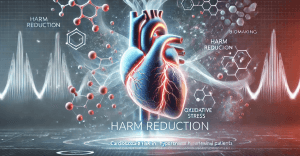A new review conducted by CoEHAR researchers, and a pool of international experts analyzed the studies evaluating electronic cigarette emissions, confirming low levels of potentially harmful compounds, such as carbonyls, in e-cigarette aerosol, revealing once again that these devices may be a less harmful alternative to traditional cigarettes.
Catania, August 9, 2024 – Are the components released by e-cigarette aerosol harmful to human health? And are they as harmful as those in traditional cigarettes? The advent of electronic nicotine delivery devices, such as e-cigarettes and heated tobacco products, has highlighted the need to assess and quantify the potential risk of vaping compared to traditional cigarettes, to understand if these devices can truly represent an alternative for millions of smokers worldwide.
Electronic cigarettes deliver nicotine through an aerosol generated electronically without combustion by condensing vapor produced by heating a liquid solution with power supplied by an electric battery at temperatures well below tobacco ignition. The difference in nicotine intake and the type of device allows for the hypothesis that both users and those around them are exposed to significantly lower amounts of potentially harmful compounds compared to the smoke generated by a regular cigarette. In fact, the aerosols generated by e-cigs necessarily avoid much of the physicochemical complexity of tobacco smoke, since there is no sidestream emission and their mainstream emission does not contain 97-99% of compounds in tobacco smoke. However, emission studies have revealed that carbonyls, especially aldehydes such as formaldehyde, acetaldehyde, and acrolein, are the most abundant by-products.
“Our review – explains Roberto A. Sussman, Institute of Nuclear Sciences, National Autonomous University of Mexico – takes a close look at the chemistry of e-cigarette emissions, highlighting the best analytical methods to measure specific toxic chemicals called carbonyl compounds. This focus helps set a new standard for accurately assessing what’s in e-cigarette vapor”.
To evaluate the residual risk, studies are needed that effectively assess the following aspects: the devices and experimental procedures used to allow for potential reproducibility of outcomes; the appropriate puffing parameters that are as close as possible to the design of the devices and their usage by consumers; the appropriate analytical methods; and the use of blank samples or control sample contamination. The blank method involves the analysis of an analyte-free matrix processed using the same method as that used for the analysis.
The review “Analytical methods and experimental quality in studies targeting carbonyls in Electronic Cigarette aerosols” includes 14 studies (11 independent and 3 industry-funded). Papers were reviewed by placing a stronger emphasis on analytical methods, thus providing a more detailed examination of the processes of carbonyl analysis, the derivatization procedure, and the analytical method used for quantitative analysis. In these 14 studies, the detected levels of the main aldehydes (formaldehyde, acetaldehyde, and acrolein) were lower than the levels of the same compounds found in cigarette smoke.
“The studies we reviewed were of high quality and consistently found low levels of carbonyls in e-cigarette emissions compared to tobacco cigarette smoke. This solid evidence further supports the idea that vaping can be a less harmful alternative to smoking, which contrasts sharply with earlier studies that reported higher toxicity levels due to flawed methods,” adds Federica Maria Sipala, Department of Drug and Health Sciences, University of Catania.
However, the studies exhibited the following experimental flaws:
· although only 5 of the 14 studies used blank samples, alternative validation methods have been employed.
· 6 studies failed the replicability condition by not disclosing sufficient information on the devices and experimental procedures.
According to researchers, these flaws need to be corrected to improve the quality of emission testing, which suggests the need to update and improve the standards of laboratory emissions testing. Testing standards must incorporate and demand the usage of blank samples.
“We also found broad agreement among both industry and independent studies, reinforcing the reliability of data suggesting that vaping may be a much safer option than smoking. It’s important to incorporate the consumer experience within the studies. Unfortunately, many studies do not consider the peculiarity of e-cig users’ patterns, failing to provide adapted information to apply the results in effective health policies to combat the scourge of smoking,” concluded Prof. Simone Ronsisvalle, Department of Drug and Health Sciences, University of Catania.




